Custom Shop: The Making of Orchid (Part 2)
This week, we continuing the series on the making of Orchid, a custom bass by Rick Toone. If you missed it, check out Part 1.
Rick Toone tells the story on the making of this custom bass.
Machining Bridges
I devoted the past several years to designing, patenting and developing an integrated line of premium instrument hardware for guitar and bass. One patent has been awarded — acoustic guitar bridge — and several other patents are pending, including for an intonation adjustable nut, bridge, and body-mounted tuning system.
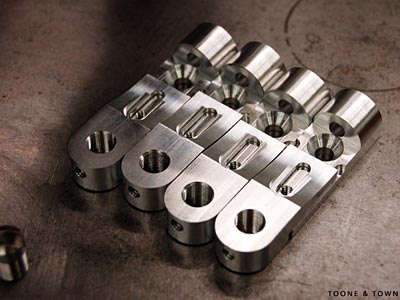
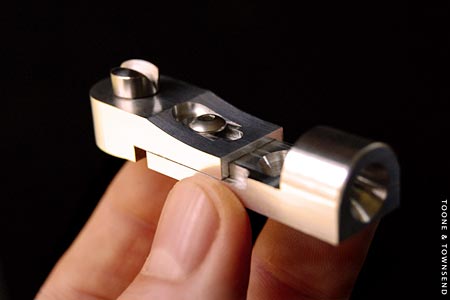
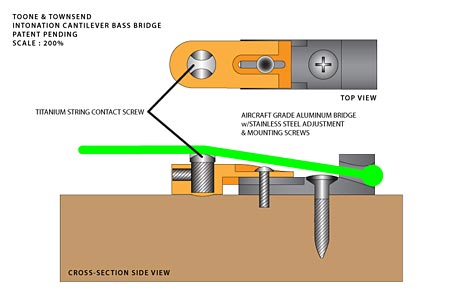
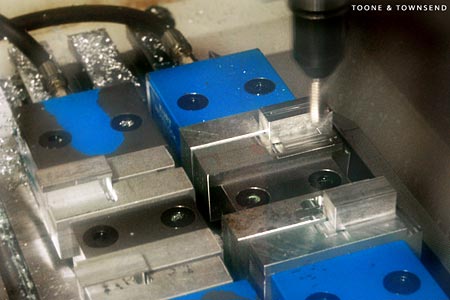
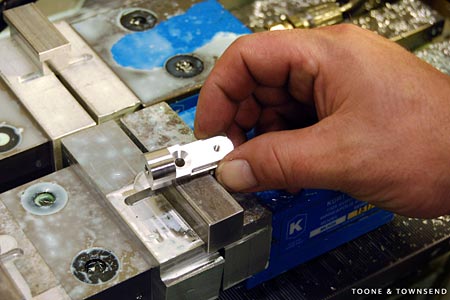
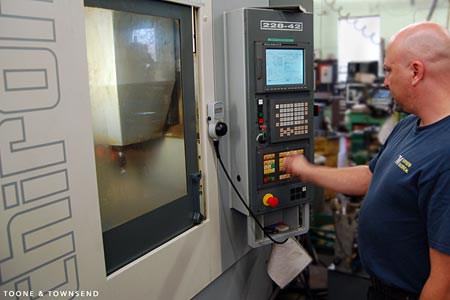
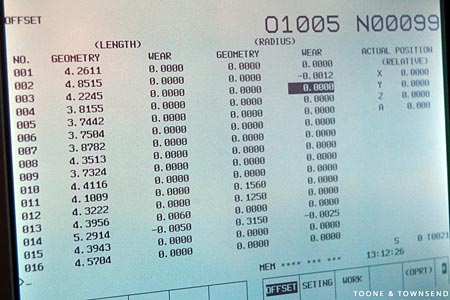
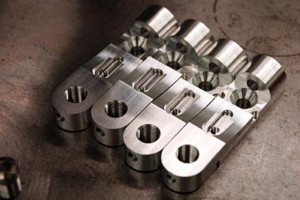
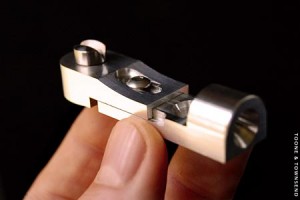
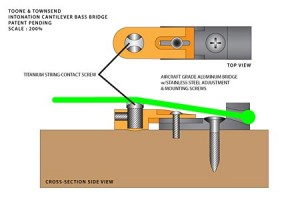
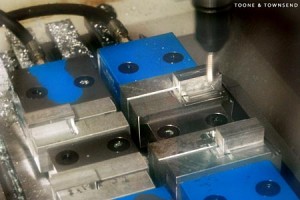
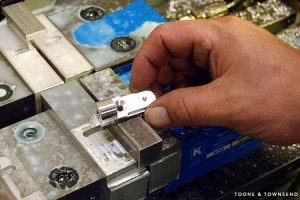
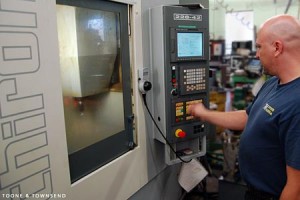

One objective I set for myself was to explore, research and control string vibration in order to fully exploit sound wave transference between string and body (or neck) of the instrument. We, as musicians, invest significant thought and effort into choosing strings or pickups in search of “our” sound, not realizing that string contact points play an equally dynamic sound shaping role.
These differences are not subtle.
Titanium is inherently musical, with deep warm bass, balanced midrange and clear upper harmonics. Strings meet smooth titanium saddles in contoured slots specifically designed to maximize sustain. Aircraft grade aluminum, machined from solid blanks, forms the structure of the bridge, with an ecologically-friendly anodized matte subsurface coating that is electrically non-conductive. Adjustment and mounting screws are stainless steel.
Designed for spring-loaded tension, the bridge efficiently conducts string vibration directly into the wood of the instrument body, without the need to pass through a mounting plate. Additional organic warmth results, with pronounced discernible differences between tone woods. Individual modular string units minimize cross-talk and excel in multi-scale (fanned fret) applications.
I was fortunate to meet and partner with Bart Townsend, who shares with me this vision of developing the finest instrument hardware available. Townsend Machine brings aerospace CNC precision and AS9100 certification to the quality control process. Designed and machined in New Jersey, USA.
Corey’s bass will receive our very first production bridges, coincidental with public launch. Very exciting!
Position Markers
Lately I’ve been exploring contemporary aesthetics, eschewing fretboard inlay for oversized side markers. Hand positions are clearly delineated, eliminating the musician’s “hunch” so often seen as players struggle to view fret markers located on the fretboard, facing the audience.
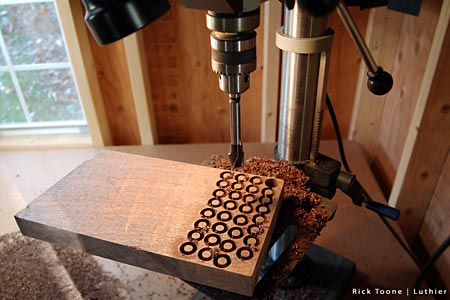
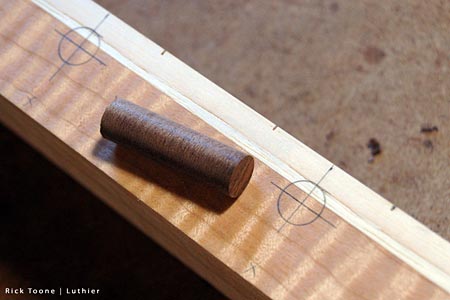
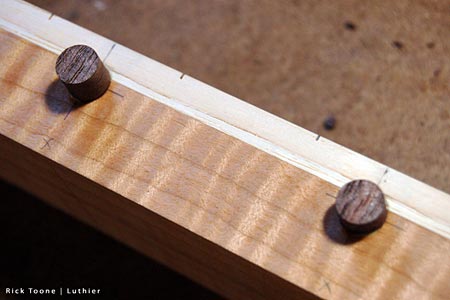
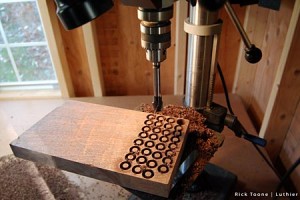
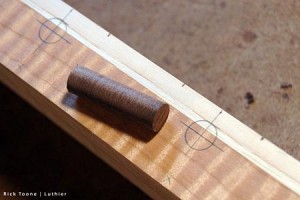
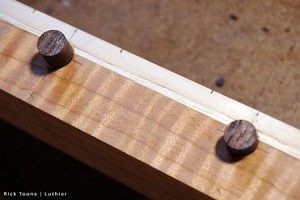
Solid walnut plug blanks are machined with a drill press, tapped into the neck blank to the aircraft grade aluminum neck core. Glued and shaved flush against the maple and hickory, our neck remains a solid integrated structure, devoid of air, as the walnut assumes a structural role.
Three-eighths inch diameter circles will become extended ovals once the neck is contoured.
Ebony Revision
One of our visual goals for this project is to achieve the vibe of an upright acoustic bass. Tap into the rich history of the upright, in relation to jazz, an almost eponymous pairing.
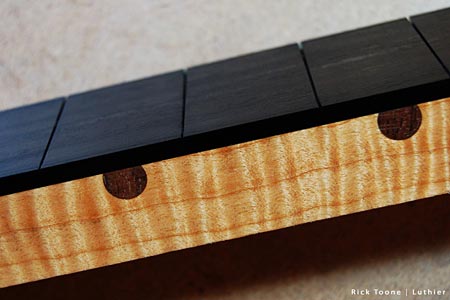
Corey and I looked at the partially constructed hickory fretboard combined with curly maple neck and decided — although beautiful — the feel was drifting too far from an upright. There is a centuries-old tradition of black ebony fretboards on upright acoustic stringed instruments, and that subliminal connection is strong. Blonde hickory matched to deep amber violin varnish on curly maple is probably equally valid, artistically, but something altogether new.
Ebony is unmatched for density and rich blackness, and adds high frequency brightness. We tapped into my decade-old stash for this revision.
Hickory is actually my personal favorite fretboard material, because it is nearly as hard as ebony, just as fast, grips fret tangs firmly and adds a little resilience and bounce to the tonality…both latter characteristics due to the structural elasticity of the species. I believe hickory will become an important future fretboard wood.
We wanted to consider a North American species for the fretboard, but there is no species with appearance equivalent to ebony. I tried stain samples on hickory, maple, ash — but none were satisfying. Walnut seems to be the best candidate for a dark fretboard, however it is virtually untested on instruments, with too many unknowns for inclusion in this project. Walnut is highly esteemed for gunstocks, with a centuries-old reputation for durable wear and beauty even under harsh weather conditions, so it has strong theoretical potential.
I definitely wish to explore walnut’s tonality before committing to a client instrument-in-progress.
EMG Pickups
Chasing a specific sound through written description is somewhat like dancing about architecture. So, one of the first steps in our design process was to have Corey compile links to audio clips and videos of bass sounds he likes. Forensically studying those examples, the trend we discovered is his ear prefers active pickups.
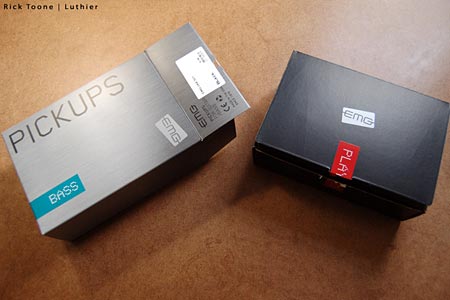
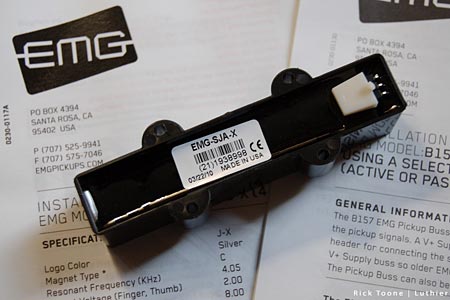
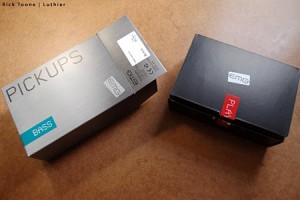
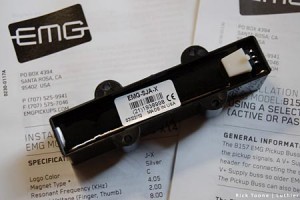
He also loves the tonal versatility of J-pickup configuration. Additionally, he will be playing through a state-of-the-art amplification signal chain. Lots of solo bass and live looping. As you can see, this equation adds up to modern and not vintage.
EMG designs and builds beautifully made active pickups, right in Santa Rosa, California. Drop dead quiet signal-to-noise ratio. Integrated premium electronics with solderless connections. EMG’s JAX maintains their reputation for J warmth but adds midrange growl and expanded headroom, capturing transients from slap & pop technique before feeding them into a contemporary lightweight powerful combo amp.

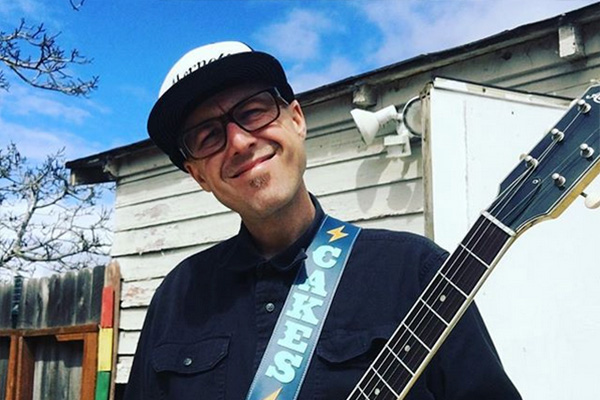
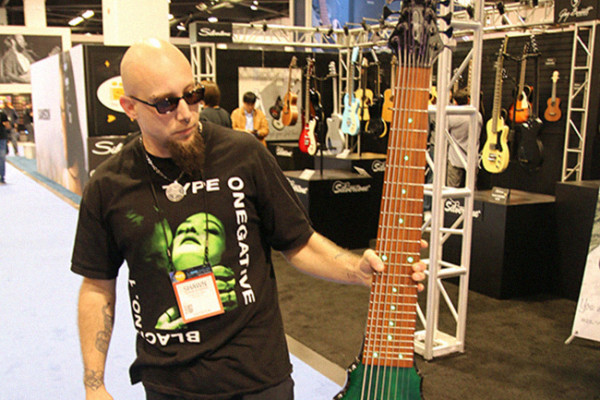
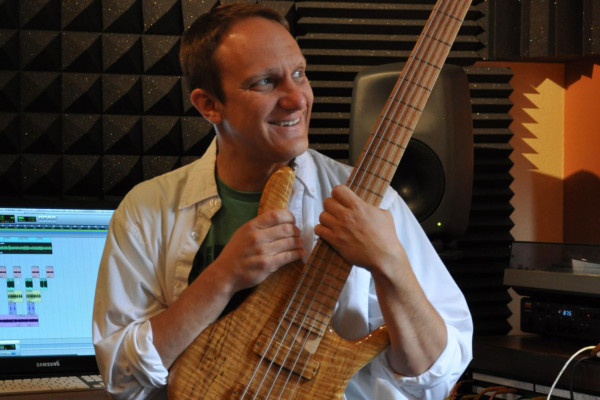
Beautiful work and very inspiring information. Thank you! How about some treble clef guitars?
[…] series on the making of Orchid, a custom bass by Rick Toone. If you missed it, check out Part 1 and Part 2.Trapezoid Neck ProfileEbony facing is glued to the headstock. Next, the fretboard, headstock and […]